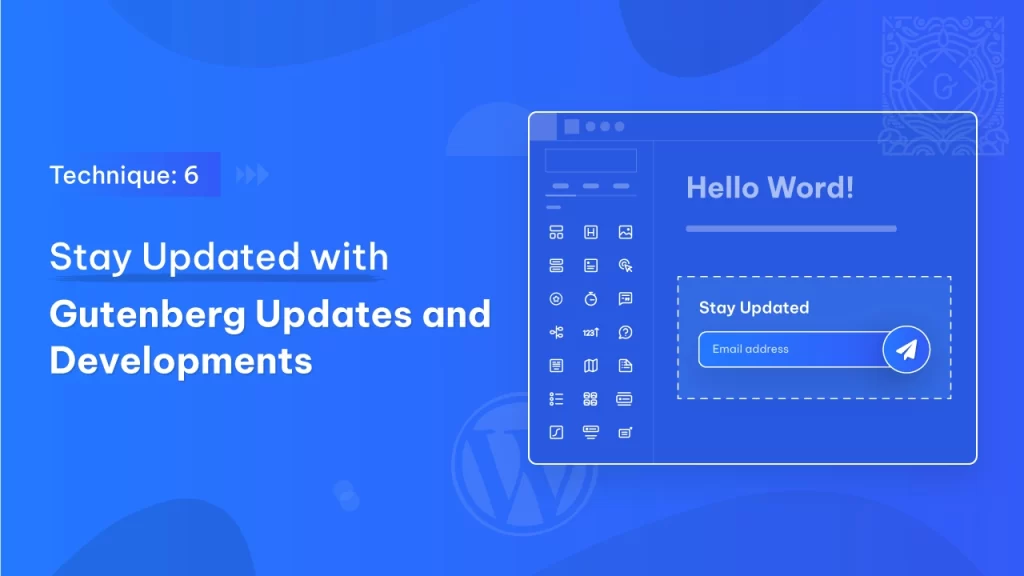The ever-evolving world of web design and content creation has been revolutionized by the Gutenberg editor. With its user-friendly interface, developers and content creators alike can craft stunning, custom experiences for their websites – but unlocking all this potential requires expert techniques!
This article will uncover six strategies to get the most out of your customization capabilities with Gutenberg blocks, no matter if you’re a novice or seasoned developer in website design.
Take advantage now and discover how these tips can elevate your online presence with engaging visuals and dynamic features. It’s time to unlock the secrets behind crafting exceptional web content using custom Gutenberg blocks!
Technique 1: Understand the Purpose of Custom Gutenberg Blocks
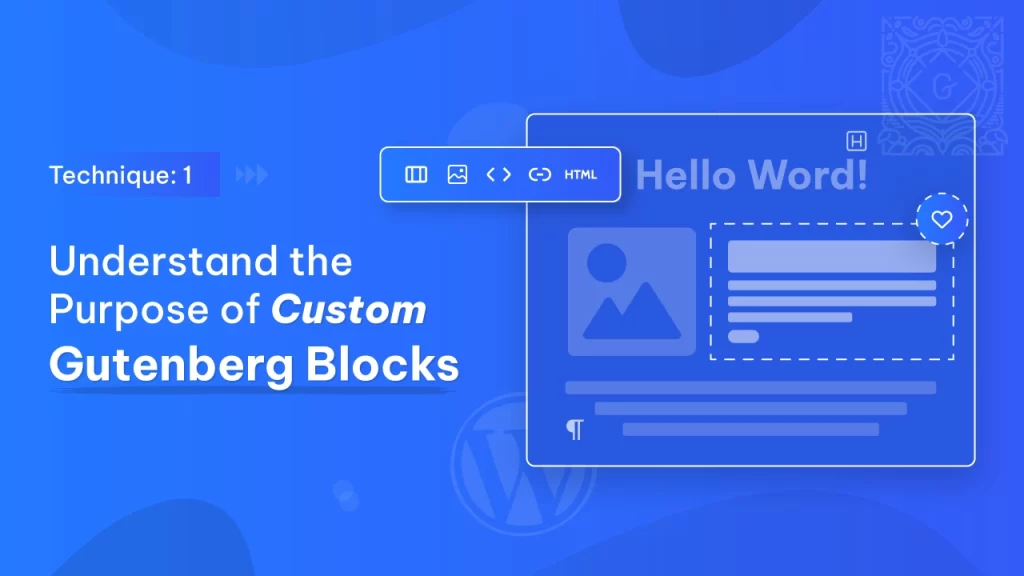
Before getting into the nitty-gritty of using custom Gutenberg blocks, it’s essential to have a firm grasp on their purpose. WordPress custom blocks are incredibly powerful tools that can drastically improve your website’s functionality and design. To ensure they fulfill all requirements for success, define clear objectives and goals before diving in!
For instance, let’s say you want to use custom block in Gutenberg WordPress specifically designed for highlighting destination photos on your travel blog.
By understanding what its function is upfront, you’ll be able to make sure it has everything necessary: captions or descriptions with an intuitive interface, easy customization options such as different layouts or filters, etc., so users get the best experience possible when engaging with them.
To make sure your custom Gutenberg blocks are purposeful, here’s a four-step plan:
- First off, assess the content and functionality of your website to identify what elements could be improved with custom block features.
- Next, take into account user behavior and objectives – for example, if you’re running an e-commerce site, maybe you’d like specialized blocks for product listings or a slider showcase?
- Thirdly, research existing related block functions so that they can inspire ideas while also identifying potential gaps in desired performance.
- Lastly, collaborate with any team members or stakeholders to understand their individual requirements, which should all fit together nicely as part of the overall website aim.
Technique 2: Why Use a Block Plugin or Builder – Choosing the Right One?
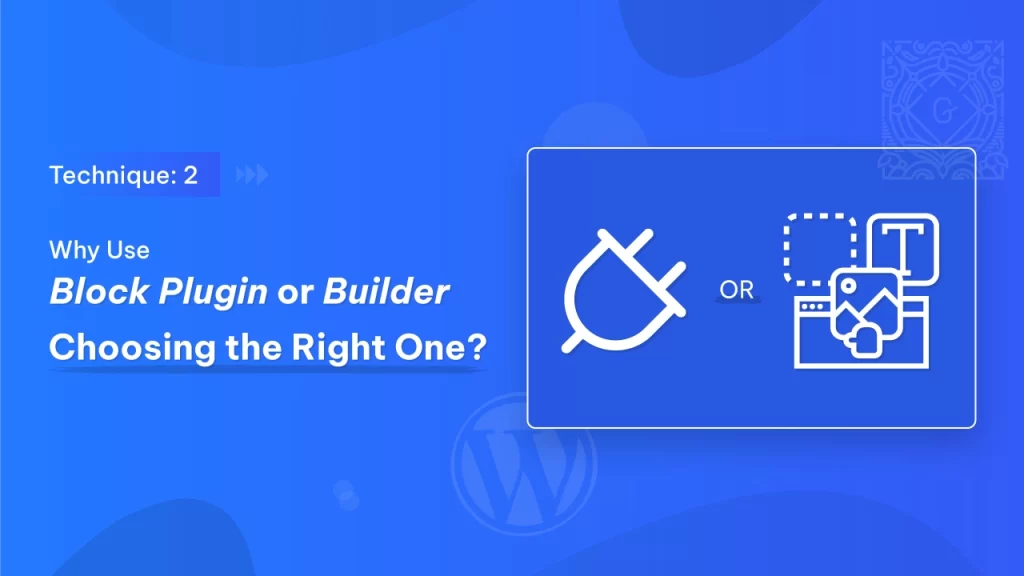
You have a wide choice – an amazing selection of popular plugins or builders to spice up your Gutenberg blocks with advanced functionality and possibilities for customization.
For instance, Atomic Blocks – this collection of pre-made blocks will help you create unique layouts quickly. Its user-friendly interface helps you engage website visitors quickly!
Another good solution is CoBlocks, which has such advanced blocks as testimonials, pricing tables, and accordion tabs for content creation in a versatile but simple way.
And we won’t forget Kadence Blocks – this mighty plugin works not only with an extensive library of handy blocks but also provides dynamic content settings along with shape dividers & row layouts to create awesome designs visually!
Considerations for Selecting a Block Plugin or Builder
When deciding between the block plugin or builder for your website, several different factors need to be considered in order to make the correct choice.
Firstly, look out for one with an easy-to-use interface and intuitive controls – this will ensure smooth custom Gutenberg blocks creation/edits are easily practiced.
Secondly, assess the scope of customization options available, such as color control settings, typography choices, and advanced styling features, so they align well with your brand identity.
Thirdly, take compatibility into account by making sure whatever option chosen is compatible not only with WordPress but other essential plugins, too, thus avoiding any potential conflicts arising later down the line from integration issues, etc.
Lastly, check out their track record regarding customer support & updates – always select something that provides regular updates to stay up-to-date on current WordPress developments, plus has reliable 24/7 tech assistance should problems arise during use afterward.
And don’t forget to choose the right provider – cmsMinds can easily help you to leverage all the benefits of WordPress Gutenberg.
How to Choose Between Gutenberg Page and Other Block Builders?
Before you decide, think of their pros and cons against every WordPress website development block plugin and builder available. When comparing one against another, look at each’s feature set: Does it fit your needs? Are there any special features or improvements that could benefit you?
Then check out the user interfaces – which feels more intuitive for you to work with? A well-structured UI can speed up processes as well as boost productivity.
Performance comes into play, too – seek out those optimized for efficiency so users enjoy an enjoyable experience without long loading times on your site.
Finally, review feedback from other people who’ve used these builders – they’ll provide invaluable opinions about potential issues or advantages of different plugins!
Technique 3: Customize Block Layouts and Styles
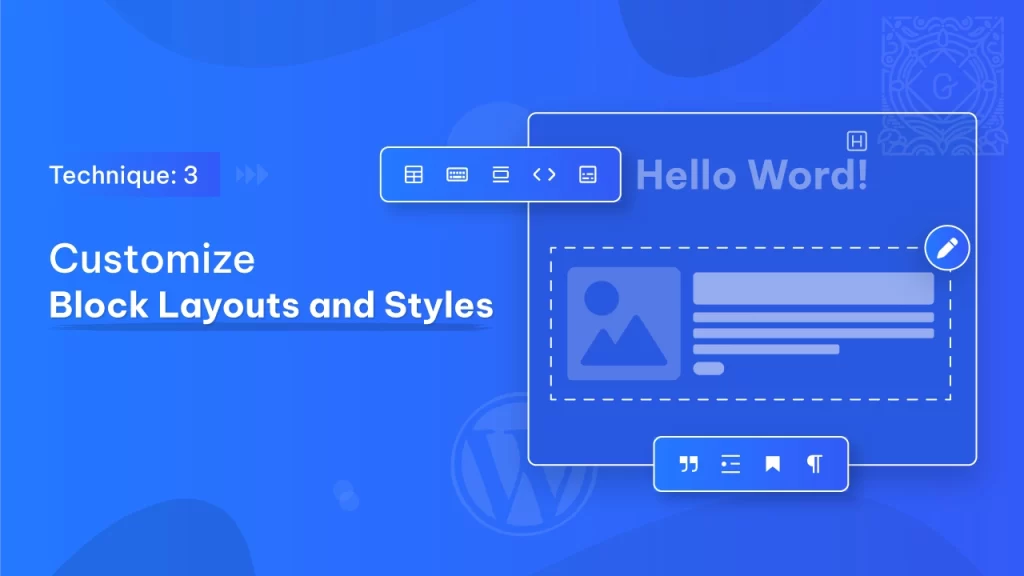
Gutenberg offers the fantastic advantage of being able to tailor block layouts and styles to suit your exact requirements. This allows you to craft aesthetically pleasing, original designs for your content – take custom testimonial blocks on a website as an example.
Instead of relying solely upon Gutenberg’s default layout, make adjustments such as background color, font type, and text alignment in order that it reflects both the brand’s style whilst remaining visually striking too!
Opting either for custom CSS code or utilizing what is provided by Gutenberg itself within its editor makes altering block styling/layout much more straightforward, allowing users to make amends without having any coding expertise at all!
Technique 4: Utilize Block Patterns
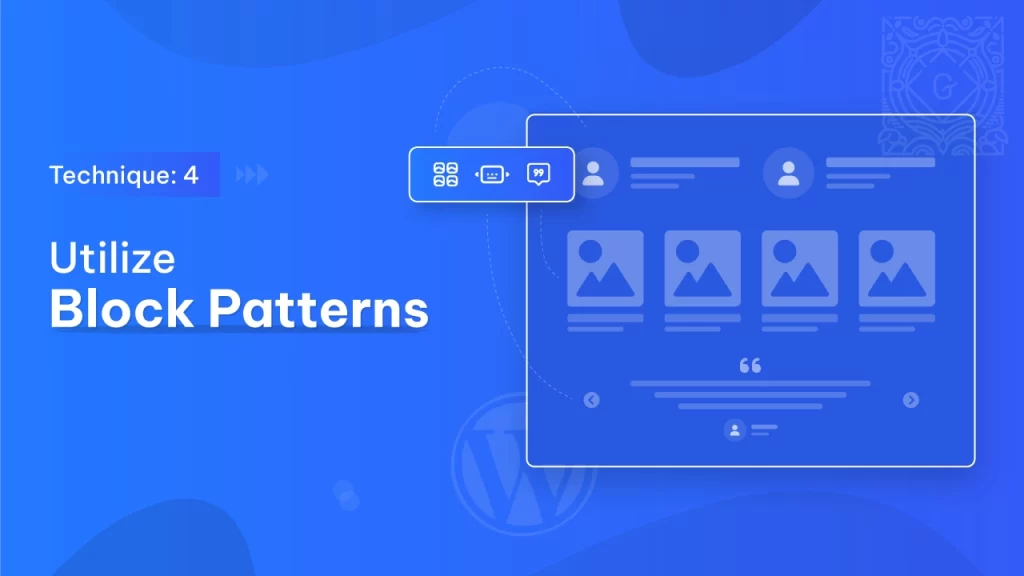
Block patterns are a great way to easily create complex, visually appealing layouts in WordPress website development without needing coding or design skills. By utilizing them with custom blocks, you can save time and effort while maintaining consistency across your website for an enhanced user experience.
To give you some ideas of how effective block patterns can be used:
- Testimonial Carousel – Showcase multiple reviews from customers using this pattern that’s easy to navigate. Customize the look by adding transitions, star ratings, and images with extra features through custom blocks.
- Pricing Table – Make it simpler for visitors to understand different subscription plans/services available on your site in an organized fashion; add interactive pricing options plus icons & order buttons via customization.
- Featured Products Grid – Display top-selling products or latest offerings as part of eCommerce websites’ catalogs along with product details such as prices, hover effects, plus a quick view feature thanks to additional elements within custom blocks.
- Team Member Profiles – Create attractive profiles of team members complete with names, titles, bios, etc. Include social media links & contact forms, too!
- Image Gallery – You can create grid and carousel formats that showcase your images beautifully, complete with captions and the convenience of lightbox viewing.
Not only will these interesting combinations help make your web pages stand out, but they also provide endless possibilities when combined smartly!
Technique 5: Test and Refine Your Blocks
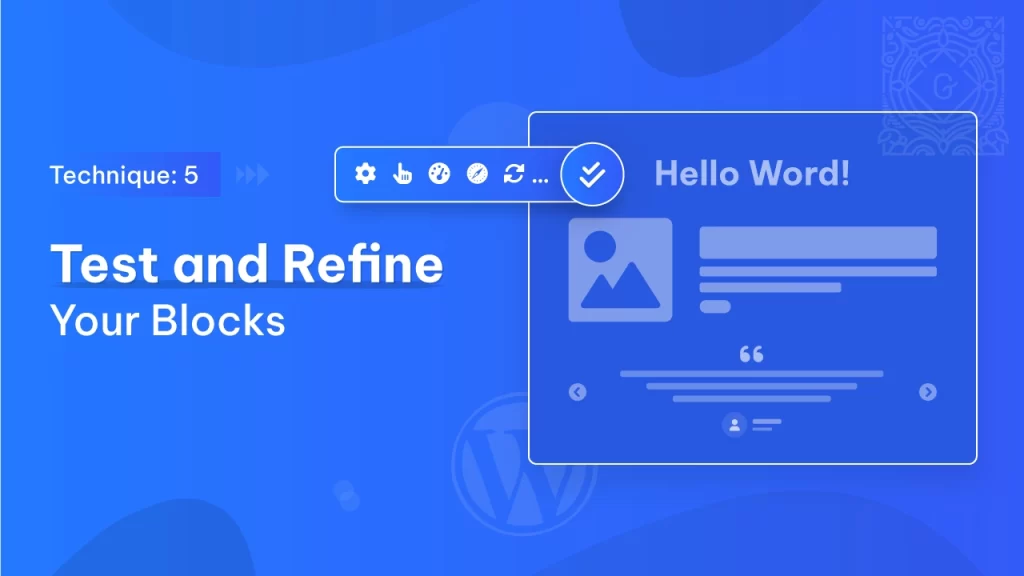
Testing the custom Gutenberg blocks is vital for this smooth user experience. Run your tests to identify any bugs or issues that need fixing because they assure you things are working as resourced & intended and aligned with website goals & expectations.
Here are some strategies:
- Functionality testing: Test if your blocks work the way they are supposed to. Check any cranky red flags like broken links or incorrect data connections. Also, test the compatibility of the blocks across different themes and plugins working across various devices and browsers.
- Usability testing: Dig deep into usability through usability testing by observing users interact with your blocks, collecting feedback about feeling confused, having difficulties in navigation layout, or general impression of the block itself from their perspective.
- Performance testing: Run tests to see if the blocks load fast without affecting the overall speed of the website. Optimize code and lower unnecessary scripts slowing down the blocks.
- Cross-browser and cross-device testing: Test popular browsers such as Chrome, Firefox, and Safari along with different screen sizes and resolutions.
- Feedback and iteration: Get feedback from users, developers, and stakeholders about their views and suggestions around improvements. Refine on this feedback, make required changes, and develop new features or enhancements.
By running tests and refining your custom Gutenberg blocks every time with an effort to improve its functionality, usability, and overall performance so that it creates a positive experience for your visitors coming to your website.
Technique 6: Stay Updated with Gutenberg Updates and Developments
Staying informed on the latest Gutenberg updates is essential for keeping your custom blocks compatible and taking advantage of new features.
Here are a few ways to stay in the know:
- Follow the official Gutenberg GitHub repository – this allows you an inside look at development progress so you can keep up with any changes that may impact your custom blocks. Plus, get notified about bug fixes and feature enhancements!
- Get involved with the Gutenberg community, too – join forums or online discussion platforms to network with developers who work regularly with Gutenberg, plus gain invaluable insights into what’s new.
- Social media groups also provide timely updates on all things related to WordPress website development beloved page builder tool!
Bottom Line
Gutenberg has undeniably transformed the way we create content in WordPress. By applying the tips presented here, developers can get maximum benefit from custom Gutenberg blocks – bringing content to life and providing editors with a user-friendly experience.
The possibilities of custom Gutenberg blocks are vast. Unlocking their full potential requires more than just browsing – it takes exploration beyond what is already known combined with careful examination! And with cmsMinds, it becomes even better.


